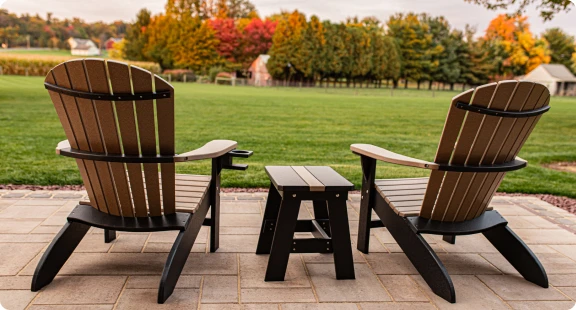Have you experienced foundation issues, basement flooding, soggy yards, and damaged plants because of the excess water? Consider a French drain system for yard to control the water around your property.
Homeowners with functioning French drain in yard experience dryer lands and reduced risk of basement leaks and foundation issues. Overall, with a French drain, the landscape drainage is improved, leading to healthier plants and fewer structural issues and water damage.
But, how to install a French drain? With a set of steps and tips, explained in the section below.
When and Why You Might Need a French Drain
Before you learn how to build a French drain in your yard, here are four foolproof signs that you need it:
- Pooling water after rains
- Foundation issues, such as cracks, uneven floor, musty smell or damp basement, mold, mildew
- Soggy grass is an indicator of excessive moisture due to poor drainage
- Flooding in the basement
Installing a French drain aids in solving these issues, but also brings additional benefits such as:
- Cost-effectiveness – French drain saves money on expensive repairs of water damage and reduces the risk of frequent renovation needs
- Long-term protection – Once you install a French drain, you are protected from water-related problems for years
- Efficiency – A French drain maintains a healthy landscape and efficiently redirects water with minimal effort from your sides
- Straightforward French drain pipe installation – Installing a French drain doesn’t disrupt your landscape too much
- Erosion reduction – French drain prevents water runoff and protects local waterways
Planning the French Drain Installation
French drain installation starts with location and checking the local regulations to prevent fines.
To pick the ideal spot for your French drain construction, analyze:
- Water flow patterns to find where you need to improve the drainage
- Low spots where water is accumulating
- Distance from driveways and foundation to pick the perfect location not too close to these structures
Check Local Regulations and Permits
Research your state building codes and regulations before you start French drain steps. Educate on the permits and apply for them on time.
Gathering Materials and Tools
To maximize efficiency during the French drain system installation, prepare everything in advance, including materials and tools:
- Materials:
- 4-inch diameter perforated pipe
- Pea gravel
- Landscape fabric
- Pipe end caps
- Tools:
- Shovel or trenching machine
- Level
- Tape measure
- Marking paint
- Rake
Marking and Digging the Trench
Once you’ve determined the ideal location for the drain, mark it with the paint or string. Make sure it goes all the way from the poor drainage spot to the discharge area.
Keep the natural slope in mind, and outline the drain direction downhill to maximize the natural drainage.
Determine Trench Depth and Slope
For most climates, place a French drain between 18 and 24 inches of depth. Only in colder climates and rocky soil, you may have to dig deeper.
Dig at the slope with at least 1% to ensure proper water flow. It equals 1 inch of sloper per every 10 feet of trench.
Digging the Trench
Digging the trench is labor intensive and you should remain cautious to prevent damaging underground utilities. You can ask for a utility blueprint from local authorities to remain safe. In case an accident happens, contact local authorities for damage control.
Keep the digging at a consistent depth and maneuver around heavy rocks and obstacles. If there are plant roots nearby, avoid digging too close to them.
For most residential French drain systems, a shovel will be sufficient. If you wonder how to dig a French drain in a large field, the answer is simple – use a trenching machine.
Preparing the Trench for the French Drain
You’ve got a trench of appropriate length and a good depth, so do the next steps to prepare it and ensure water can pass freely.
Line the trench with landscape fabric as it acts like a filter and prevents pipe clogging; ensure the fabric extends beyond the pipe edges. Overlap the sheets to prevent bald spots and create a solid barrier.
When you are positive that the landscape fabric is in place, put a 2-3 inch of gravel at the bottom of the trench. Gravel acts as a porous base and improves drainage. Layer gravel evenly and make sure it isn’t larger than 1 inch in diameter for optimal results.
Installing the Perforated Pipe
The next step is to install the central part of the drainage system: the pipe. Here is what to have in mind for best results:
- Position the pipe with holes facing downward to ensure water enters the pipe
- Keep the pipe in the center of the trench so the gravel cannot damage it
- Connect the pipe sections with couplers with a consistent slope
- Cover the pipe with French drain layers of gravel, around 6-12 inches above the pipe
- Leave space on the trench for future maintenance and easy access to the pipe
Wrapping and Covering the Drain
There are only a few steps left to complete your French drain installation, including wrapping the pipe and backfilling the trench.
Wrap the Pipe and Gravel with Fabric
Wrapping the pipe is simple, but you’ll have to fold the fabric over the top gravel layer and pipe. Check if the fabric covers the drain and add more fabric if necessary.
Fabric can easily slide and shift during backfilling. So, you can use heavy rocks or large amounts of soil to keep the fabric in place.
Backfill the Trench
Filling the trench with soil can be time-consuming, especially if you have to backfill a long trench.
Follow the next tips to ensure your installation of a French drain disrupts the lawn as little as possible:
- Add soil in layers rather than adding one huge pile of soil at a time
- Tamp each layer down to prevent settling
- Reseed the lawn or lay sod on top of the trench to maintain a cohesive lawn appearance
- Water the lawn thoroughly to promote root growth and allow soil layers to settle naturally
Directing the Water Discharge
So, now you have a drain, but it is time to determine where the excess water goes. Here are a few examples for the endpoint of French drain:
- Dry well – A pit filled with gravel that collects and absorbs water
- Storm drain – Network of pipes and drains on the sides of the yard for discharging stormwater
- Lower area – In case there isn’t a dry well or storm drain in your yard, direct the water to a swale or any lower area
Pick the discharge point carefully and avoid its contribution to flooding or erosion. Ensure it is away from areas already prone to water accumulation.
Once you have the suitable endpoint, extend the discharge pipe. Do it so the slope is consistent and adequate and water flow isn’t disrupted.
Secure the pipe in place with pipe clamps and check for obstructions.
Maintenance Tips for Your French Drain
Learning how to install a French drain in yard is a great skill, but you need to know how to maintain it, too.
You can inspect the French drain after heavy rains, and keep in mind the following list of signs that the drain is clogged:
- Slow or no drainage at all
- Pooling water
- Gurgling sounds indicate a partial blockage
If your French drain is indeed clogged, you can manually remove debris by putting in a long tool or a drain snake. Severe blockages require the professional use of a hydrojetter to clear the blockage.
Here is a quick checklist for backyard French drain maintenance to prevent clogging and similar issues:
- Conduct yearly inspections of your French drain for blockage or damaged; indicators are water pooling near the drain and cracks
- Remove leaves, twigs, and debris from discharge for an unobstructed water flow
- Prune tree roots to prevent them from encroaching on the drain and blocking them
Key Takeaways
A French drain is a simple, yet impressive solution to severe water problems in your foundation, flooding, lawn, and plant health. Luckily, the installation isn’t that complex, and it can be a fun and rewarding DIY project when you are prepared.
Get the tools, and materials and access the site in time to determine the exact location.
However, don’t start with the installation process before you consult local authorities for requirements, permits and utility blueprint.
Have you installed drainage systems before? Share your experience and tips that helped you obtain solid results.
FAQ
How to build a french drain in your yard if I have slopes and rocky soil?
Locate the trench so it goes along the slope with a consistent water flow. In addition, if the slope is steep, you may need to add two pipes to reduce the water. In case of rocky soil, dig the trench carefully to avoid rocks from damaging the pipe.
What is the best French drain system for yard?
The system with perforated pipe, gravel, and landscape fabric is efficient in most scenarios. But, you can use geotextile tube, or French drain blocks if trenching is impossible.
Can I complete a French drain installation in a day?
In theory, with good preparation and ideal weather conditions, you may install a French drain in a day. However, because of labor-intensive digging and backfilling, installation often lasts multiple days.

